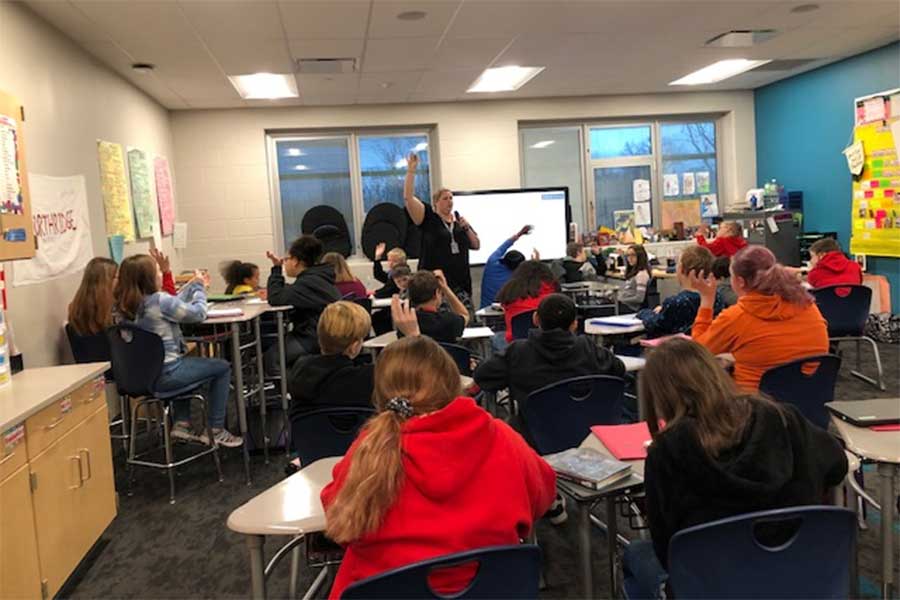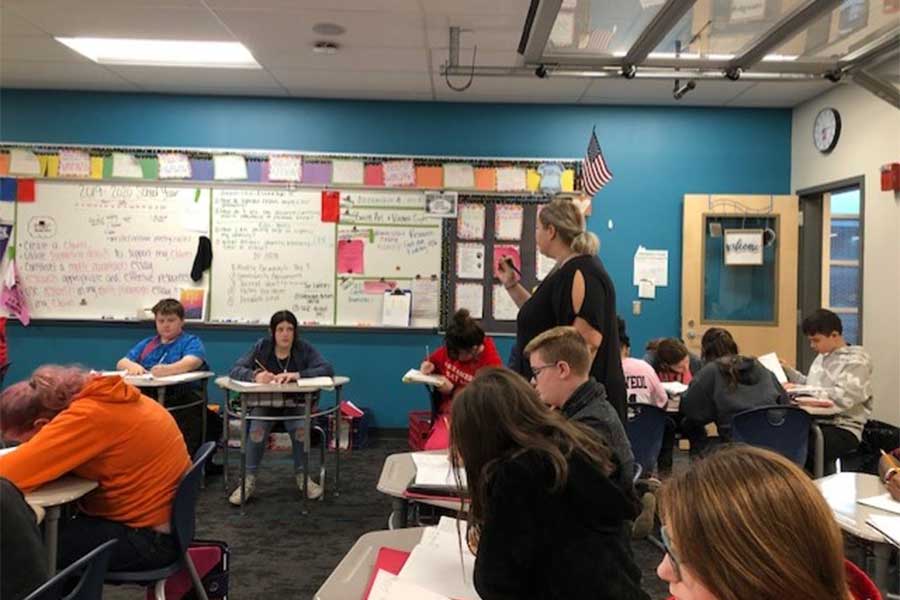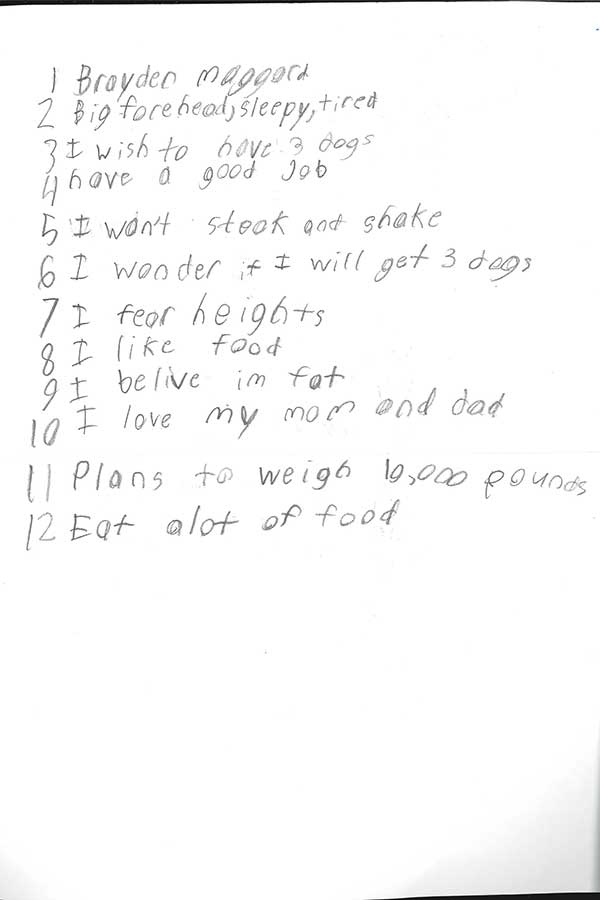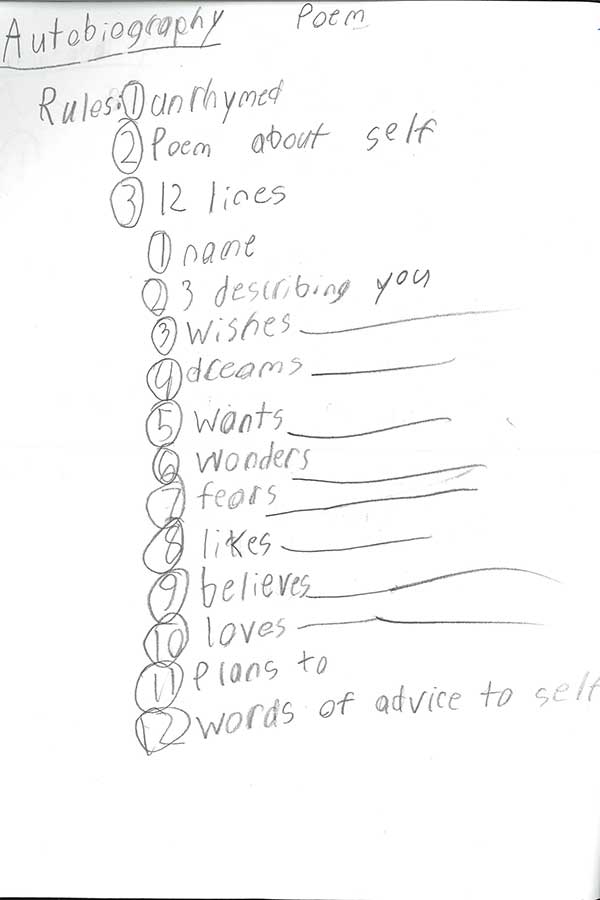Developing identity through poetry
Developed by Sheena Burns
Northridge Middle School
Language Arts
Grade Level: 6th
Introduction
Poetry is not always easily grasped by children who are struggling to express themselves in writing. However, a skillful teacher uses many tools to address this kind of challenge. Sheena Burns, sixth grade teacher at Northridge Middle School, uses a tool that she gained during the 2019 Muse Machine Summer Institute, to help her students understand and appreciate poetry and how it can help people express their emotions. The device learned from Ping Chong + Company, called “River Stories,” provides a simple framework for youngsters to write an autobiographical poem while addressing Ohio standards for writing. Sheena skillfully uses this tool during her lesson entitled, Developing Identity through Poetry.
Click here to view/download this lesson plan as a PDFInspiration
These activities were inspired by Muse Machine’s 2019 Summer Institute: “Identity, Belonging and Sense of Place,” presented by Ping Chong + Company. The institute focused on the development of these themes through poetry, storytelling, art and discussion.






Overview
Summary
This lesson focuses on personal reflection and expression through poetry. Each week, students learn new types of poetry and record them in their poetry notebooks. They also practice writing each form of poetry. This lesson was inspired by a Ping Chong + Company activity called “River Stories.” The writing prompts from this activity are used to gather potential topics for an autobiographical poem.
Standards
W.6.4 Produce clear and coherent writing in which the development, organization, and style are appropriate to task, purpose, and audience.
W.6.10 Write routinely over extended time frames (time for research, reflection, and revision) and shorter time frames (a single sitting or a day or two) for a range of discipline-specific tasks, purposes, and audiences.
Objectives/Outcomes
Students will continue to develop a sense of identity, belonging and sense of place. Students will produce an autobiographical poem.
Teaching Approach
Direct instruction, class discussion, partner work (think, pair, share), read aloud, co-teaching
Assessment
Students will submit their autobiographical poem which must meet the poem’s requirements based on our class notes.
Lesson Preparation
Teacher Needs
- Poetry notebook
- Clevertouch
- Block 1 notebook
Aspects of biographical poetry sheet
Teacher Information
The teacher could look over a website such as How to Teach Your Students to Write Biography Poems or How to Write a Bio Poem
Student Needs
- Poetry notebook
- Block 1 notebook/folder
- Writing utensil
Prior Knowledge
Poetry forms/elements
Student Voice
Students will be able to choose their partner for the Students will produce an autobiographical poem which will reflect their own sense of place, belonging and identity.
Vocabulary
poetic elements, rhyme, syllabic pattern, format, character traits/physical traits, autobiography, biography
Evidence/Assessment of Outcomes
Each student will produce an original biographical poem that is a piece of clear and coherent writing in which the development, organization, and style are appropriate to task, purpose and audience.
Enduring Understandings
Poetry is a means of self-expression which allows readers and writers to reveal their true identity. Poetry is an art form which may or may not follow specific rules and formatting. Life is a story; how will you write your story?
Learning Plan
Prompt
Look at some samples of biographical poetry
Hooks
Group discussion of essential questions (see below)
Essential Questions
- What defines who I am?
- What places do I have a connection with which help to define my identity?
- What communities do I identify with?
Resources
As described under Teacher Needs
Teacher and Student Performance Tasks
- Student will begin class by signing into Google Classroom and completing their Weekly Paragraph.
- Teacher will provide directions for students by reading them from their Weekly Paragraph document.
- Teacher will review the class’s Community Agreements.
- Teacher will ask students for any additional items/discussion topics based on Community Agreements.
- Teacher will ask students:
- “What defines who you are?”
- “Do the people you hang out with define who you are?”
- “Do places help define who you are?”
- Teacher will share experiences with Muse Machine Summer Institute and how this helped to mold/solidify her identity. (If you did not attend the Institute, substitute another life-defining experience, place or interest to share.)
- Teacher will record students’ responses on Clevertouch.
- Student will open interactive notebooks to next blank page.
- Teacher will instruct students to construct a 4-square reflection:
- Words to describe me
- Wishes/hopes dreams
- Places with Personal Connections
- Interests
- Teacher will model by sharing her own 4-square responses:
Examples
- Words to describe me: creative, artistic, silly, quirky
- Wishes/hopes dreams: “Dr.” Burns, learn piano, students grow up happy/healthy, etc.
- Places with Personal Connections: Victoria Theatre, Middletown, KY, beach, Lake Norris, Schuster Center
- Interests: Muse Machine, art, music, theatre, volleyball, teaching, politics
- Student will be given 5-7 minutes to complete journal.
- Students will be given 4 minutes to think-pair-share with a partner. Students should discuss their responses and make note of their similarities and differences.
- Student will take out poetry notebook and label top of page with “Bio Poem” and date.
- Teacher will instruct students about rules of autobiographical/biographical poetry. (See aspects of biography poems handout) Students will record information in their poetry notebooks.
- Teacher will model an autobiographic poem for students.
- Teacher will read a former student’s poem.
- Student will write their own autobiography poem.
Final Review
Students will share their poems.
Lesson Reflection
Students were actively engaged in the lesson. However, during some parts of the assignment some students were off-task; I could implement ‘popsicle sticks’ or randomizer on Class Dojo to get more students participating.
Modeling the journaling with my ideas seemed to ‘spark’ student writing. I did not implement ‘think, pair, share’ after student journaling but would implement next time for students to build more connections/community with classmates.
Students used their journals to help write their autobiographical poem; this seemed to help students have ideas for their poem. I wish I had more time to allow students to share their journals.
Next time, I will do an extension activity where students create artwork/sculpture to represent their autobiographical poem.





